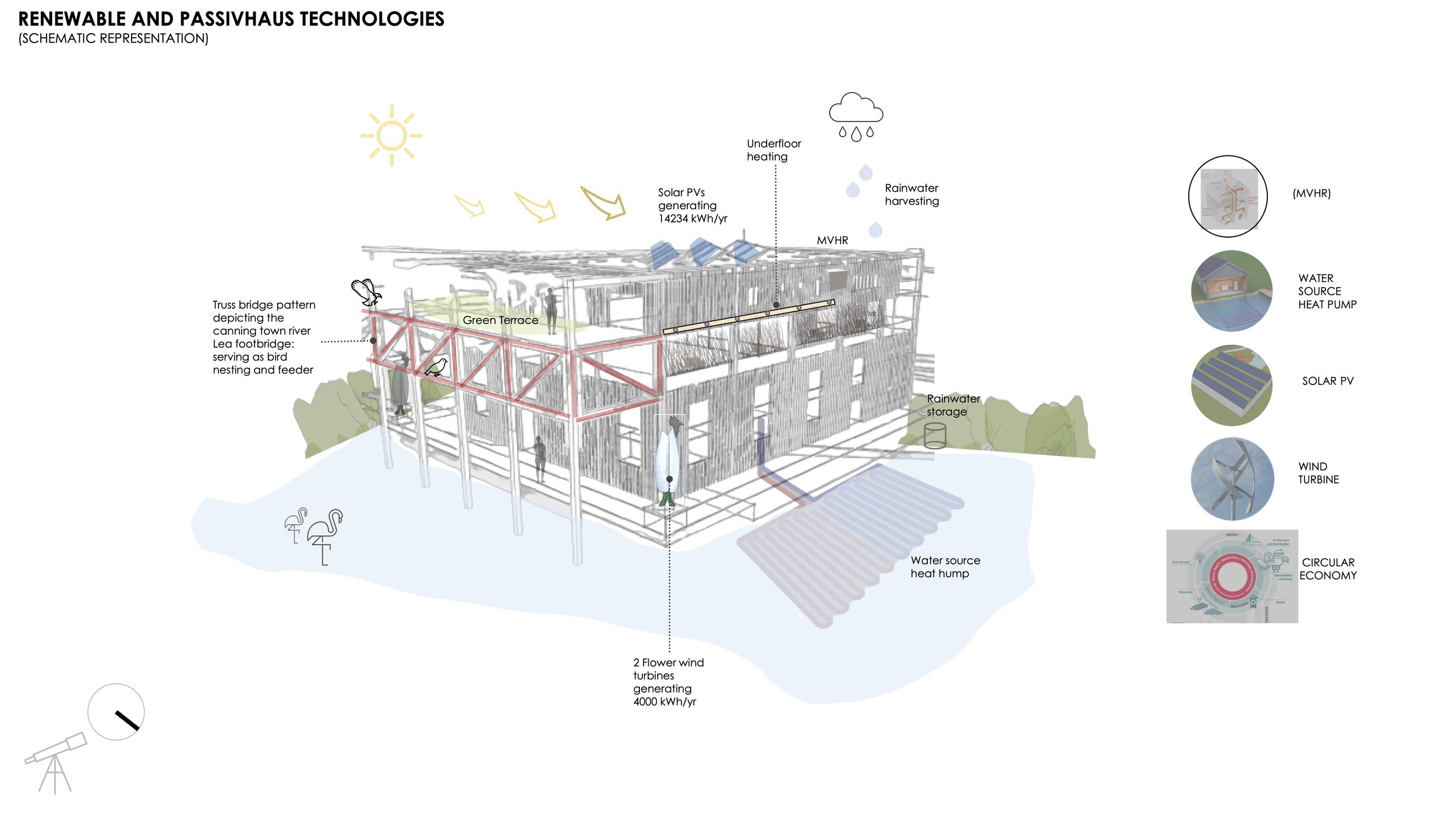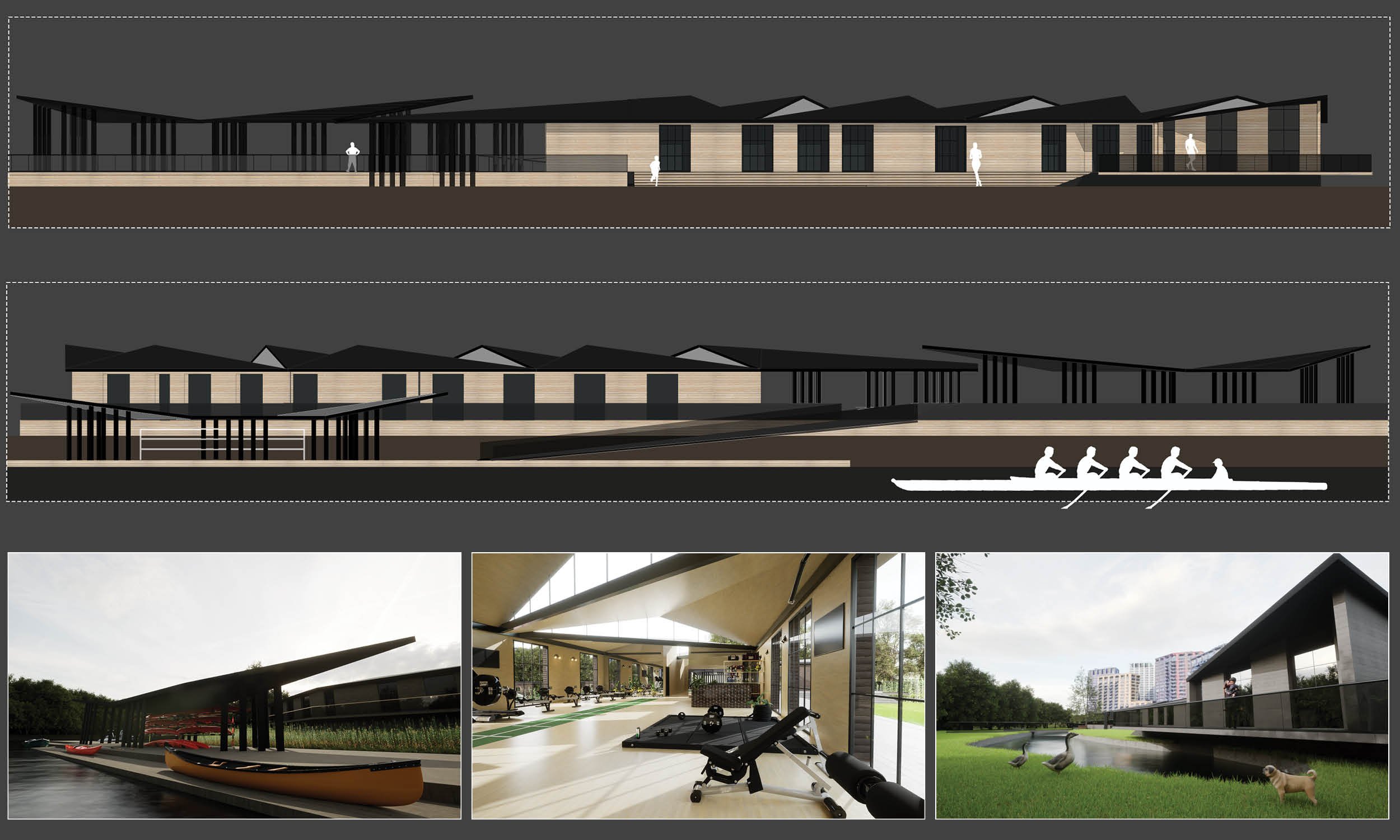Sustainable Architecture Evaluation and Design (SAED)
Sustainable architecture and the changes to our climate have been the centre of ethical architecture and many governmental policies. The Sustainable Architecture: Evaluation and Design course, aims to guarantee a better future and lowers the impacts on our climate by providing vast knowledge in this area to the students, derived from many years of research and knowledge exchange. Our course focuses on the theory and practice of developing low carbon and sustainable buildings with a strong link with the industry allowing students to learn from the latest challenges. There are several theoretical and practical modules within the course teaching students, the physics behind the buildings to the impact of microclimates at the urban scale, services within the building, dynamic simulation as well as the building in use performance.
The course normally benefits from several small field trips as well as one main field trip which forms part of the students’ study on implementing the knowledge gained
throughout the course, in a more practical and self-developed proposal. However, due to Covid-19 implications, some ajustments were made to ensure the safety of our students and staff.
The Building Simulation and Design in Context module allows MSc and MArchD students to apply the knowledge gained from other modules within the course through two project themes: Design for the future, and Passivhaus design. This year the project was based in London, which provided the students with the opportunity to address different challenges associated with the site and its surroundings.
The students undertook a thorough site analysis by understanding the climate (current and future climate to examine impact), constraints and challenges unique to the site, solar exposure and orientation, possible flooding problem, noise, wind, transport to and from the site, energy production within the site, survey and mapping of socio-cultural issues and environmental practices.
The students also explored the best possible strategies for the site and chosen concepts to come up with a suitable and sustainable project.
-
Hossein Sadeghi-Movahed (Subject Coordinator), Dr. Shahab Resalati
(Module Leader), Prof. Rajat Gupta (Module Leader), Dr. Emma Rowden (Module Leader), Charlotte Khatso, Neil Kiernan, Satvinder Sohal, Mehrdad Borna
-
Scott Sworts, Kate Brown, Prof. Rachel Aldred, Eshwyn Prabhu, Dr Bill Bordass, Dr Peter Rickby, Dr David Strong, Prof Fergus Nicol, Rodrigo García Priego
Special thanks:
Passivhaus Trust UK., Ecological Building Store
-
• Affan, Mohammed Mujtaba
• Akuba, Scholastica
• Bhagotra, Sibani
• Bloomfield, Georgina
• De Almeida Soares Da Silva, Samira
• Dib, Jean
• Durand, Julie
• Fischer, Kate E.
• Jain, Archit Rajneesh
• Judez, Patricia
• Kirsopp, Natasha M.
• Loganathan, Maniraj
• Mutha, Bhagyashree
• Nayak, Karan R.
• Patil, Geetesh J.
• Poskute, Laura
• Sable, Puja Navanath
• Sangoi, Aman N.
• Tetik, Ipek
• Thakkar, Ujas Girishbhai
• Wood, Lucy
-
• Balasooriya, Prashani
• Dev, Rushiraj Suketu
• Damania, Dinjal
• Kanellopoulou, Martha
• Lin, Ting Yu
• Makrides, Athanasios
• Pál, Dániel
• Smith, Georgia F.
• Williams, Akila Sanjith Amarasekara
• Yadav, Shrutika Suresh

Akila Sanjith Williams:

Akila Sanjith Williams:

Bhagyashree Mutha: THRIVE Discovery centre - THRIVE discovery centre is designed to promote thinking beyond the Anthropocene. This centre considers a holistic approach that interconnects Science and Art and provides space for both cognitive and emotional dimensions of knowledge. This would also foster sustainable human-nature relationships and thus open-up fresh perspectives for all the living species. This centre would create a positive and rewarding environment for society to interact with nature in its purest form. Let us all thrive and not just merely survive!

Bhagyashree Mutha: THRIVE Discovery centre - THRIVE discovery centre is designed to promote thinking beyond the Anthropocene. This centre considers a holistic approach that interconnects Science and Art and provides space for both cognitive and emotional dimensions of knowledge. This would also foster sustainable human-nature relationships and thus open-up fresh perspectives for all the living species. This centre would create a positive and rewarding environment for society to interact with nature in its purest form. Let us all thrive and not just merely survive!

Daniel Pal: London City Charger is a net-zero sports club powered by solar, tidal and human (fitness) energy. Main aim of the concept is to motivate the current and future generations in living with a healthier lifestyle and reducing their carbon footprint.

Daniel Pal: London City Charger is a net-zero sports club powered by solar, tidal and human (fitness) energy. Main aim of the concept is to motivate the current and future generations in living with a healthier lifestyle and reducing their carbon footprint.

Dinjal Damania: Urban Farm The Sharing Table project aims to bridge the economic gap in east London by creating a symbiotic relationship between the two halves of the community through the production, preparation, and consumption of food.

Georgia Smith: “The First Step Towards Self Sufficiency” - This project aims to create a first step towards tackling child poverty in London through creating a self-sufficient ‘village’. This features affordable Passivhaus standard homes (which adopt a cradle-to-cradle approach), with food and item markets which provide these families with further incomes. The resources for these are provided by on site food growth and a boat which collects resources through its journey down the River Lea, delivering them to the site as a final point.

Georgia Smith: “The First Step Towards Self Sufficiency” - This project aims to create a first step towards tackling child poverty in London through creating a self-sufficient ‘village’. This features affordable Passivhaus standard homes (which adopt a cradle-to-cradle approach), with food and item markets which provide these families with further incomes. The resources for these are provided by on site food growth and a boat which collects resources through its journey down the River Lea, delivering them to the site as a final point.

Julie Durand: Commun’Art: Artistic Community Park Disconnection can be found everywhere and surprisingly more in cities. From social rupture to overbuilt streets maze, this feeling is strongly present. To respond to this societal issue, Commun’Art, an Artistic & Social Community Hub just landed at the centre of Bow Creek Ecological Park in Canary Wolf. This cultural space is hosting every 6 months 4 multidisciplinary artists defending human rights, ecology or social matters. Through workshops, exhibitions and events, the artists will give life to the space all year long offering an open community space during the day and some evening events at night. The artists’ creations as well as the ones from the local people participating in the workshop will be exposed indoors and outdoors creating an evolutive Artistic path. Commun’Art is an Energy-Positive project which is willing to bring Human & Nature back together in the heart of the cosmopolitan and creative London City.

Julie Durand: Commun’Art: Artistic Community Park Disconnection can be found everywhere and surprisingly more in cities. From social rupture to overbuilt streets maze, this feeling is strongly present. To respond to this societal issue, Commun’Art, an Artistic & Social Community Hub just landed at the centre of Bow Creek Ecological Park in Canary Wolf. This cultural space is hosting every 6 months 4 multidisciplinary artists defending human rights, ecology or social matters. Through workshops, exhibitions and events, the artists will give life to the space all year long offering an open community space during the day and some evening events at night. The artists’ creations as well as the ones from the local people participating in the workshop will be exposed indoors and outdoors creating an evolutive Artistic path. Commun’Art is an Energy-Positive project which is willing to bring Human & Nature back together in the heart of the cosmopolitan and creative London City.

Maniraj Loganathan: The proposed design is to create a mixed-use residential space in the Bow creek ecology park in London city. Proposing the plantlife discovery centre with research facilities and accommodation is a better way to retain and enhance people's involvement in ecology.

Maniraj Loganathan: The proposed design is to create a mixed-use residential space in the Bow creek ecology park in London city. Proposing the plantlife discovery centre with research facilities and accommodation is a better way to retain and enhance people's involvement in ecology.

Sibani Bhagotra: A tranquil space where the body, mind, soul regenerates as London city does with the existence of Bow Creek Ecology Park. Gin (e) scape immerses you in a sensory experience while teaching you how to distil GIN, both alcoholic and non-alcoholic, in the most natural way. An opportunity for the neighborhood as a source of employment & leisure. whilst Londoners also get Distillery experience in the city itself. Native Herbs and fruits cultivated onsite are organic produce & sold in the proposed market below the DLR flyover.

Tingyu Lin: Silent Resonance: Community Memorial Centre - The design aimed to inspire multiple dialectics of judgements between reality and fantasy, opposite perspectives, and materiality, which was the inner ambition of this community memorial centre. Passivhaus, from the side of environmental activists also represented the will of sustainability.